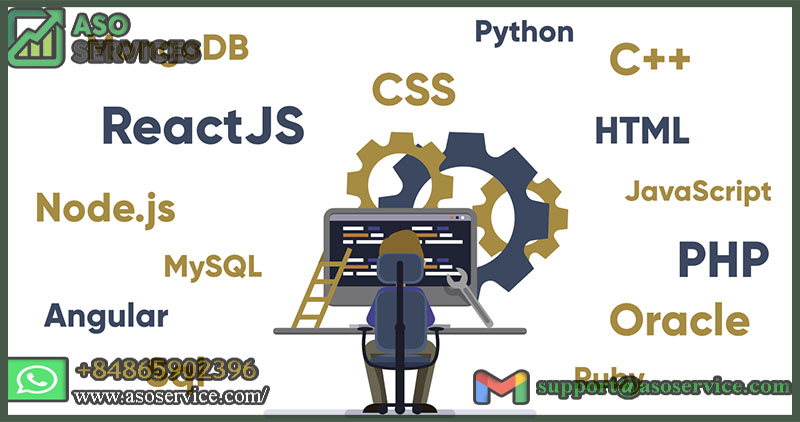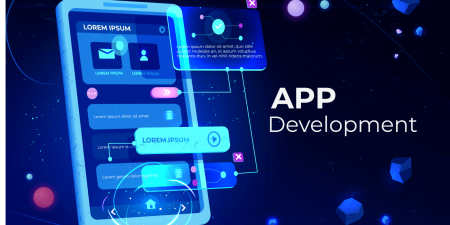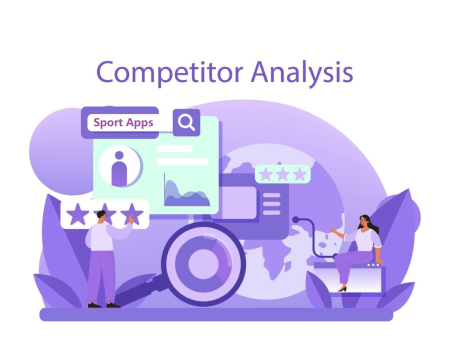Full-stack development is a critical skillset for anyone looking to build robust and scalable web applications. This comprehensive guide is designed to help you master every aspect, from front-end design to back-end coding and everything in between.
Related posts
Mobile App Design: Best Practices and Trends for User Experience
Maximizing App Discoverability: App Localization Services for ASO
1. Understanding the Full-Stack Development
Full-stack development is creating end-to-end web applications that involve both front-end and back-end development. Understanding full-stack development is essential for building robust and scalable web applications.
At its core, full-stack development involves designing and building a web application from scratch; including everything from the user interface to the server-side logic. This requires a broad range of skills and knowledge, including proficiency in programming languages like HTML; CSS, JavaScript, and back-end languages like PHP, Ruby, and Python.

Understanding the Full-Stack Development, Source: asoservice.com
One of the primary benefits of full-stack development is that it allows developers to work on all aspects of the application; from the front-end user interface to the back-end server-side logic. This ensures the application is cohesive and well-integrated; leading to better performance and a more streamlined user experience.
However, mastering full-stack development can be challenging, requiring a broad range of skills and knowledge. Developers must have a deep understanding of programming languages; frameworks, and databases and an ability to design and optimize user interfaces.
Understanding full-stack development is crucial for creating robust and scalable web applications. By mastering both front-end and back-end development, developers can create cohesive, efficient; high-performing applications that meet the needs of today's digital landscape.
2. Front-End Development
Front-end development is a critical aspect of full-stack development, focusing on creating and optimize ASO for the user interface (UI) and user experience (UX) of web applications. This involves using various programming languages and tools, including HTML, CSS, and JavaScript, to design and develop the client-side of a web application.
The front-end development process begins with designing the UI of the application, which involves creating wireframes, prototypes, and mockups of the layout, color scheme, and visual elements. The designer works with the developer to ensure that the UI design can be implemented effectively using HTML and CSS.
Front-end developers must also optimize the UI for different screen sizes and devices, ensuring the application is responsive and mobile-friendly. This involves using responsive design techniques, such as media queries and flexible grids, to ensure that the UI adapts to different screen sizes.
In conclusion, front-end development is a crucial aspect of full-stack development, focused on creating a user-friendly and engaging UI for web applications. By using HTML, CSS, and JavaScript, front-end developers can design and develop responsive, accessible, and optimized applications that meet the needs of today's digital landscape.
3. Back-End Development
Back-end development is a crucial aspect of full-stack development; that focuses on building the server-side logic of web applications. This involves using various programming languages and tools, such as Node.js, PHP, Ruby on Rails, and SQL, to create and manage the application's database; API, and server-side logic.
The back-end development begins with designing the database schema, which involves creating a data model and defining the relationships between the tables. Once the database schema is designed; the developer creates the database using a database management system (DBMS) such as MySQL, MongoDB, or PostgreSQL.
The next step is to create the API (Application Programming Interface); a set of protocols and rules that allow the application's front-end to communicate with the back-end. The API allows the application to interact with the database; execute server-side logic, and respond to front-end requests.
Back-end developers must also ensure the application is secure and optimized for performance. This involves implementing security measures, such as input validation and encryption; to protect against attacks and data breaches. It also involves optimizing the database queries and server-side code for speed and scalability.
Back-end development is a critical aspect of full-stack development; focused on creating the server-side logic of web applications. By using programming languages and tools such as Node.js, PHP, Ruby on Rails, and SQL, back-end developers can create secure, scalable, and optimized applications that meet the needs of today's digital landscape.
4. Building a Full-Stack Web Applications
Building a full-stack web application involves developing both the front-end and back-end of the application; and integrating them to create a seamless user macOS app ratings. Here are the steps involved in building a full-stack web application:
Define the requirements: Before starting development, it's essential to understand the application's requirements. This involves defining the purpose of the application; the target audience, and the features and functionality needed to meet the user's needs.
Design the user interface: Once the requirements are defined, the next step is to design the application's user interface. This involves creating wireframes, prototypes; and mockups of the application's layout, color scheme, and visual elements.
Integrate the front-end and back-end: After the front-end and back-end are developed, the next step is to integrate them to create a fully functional web application. This involves creating an API between the front-end and back-end; and deploying the application to a server.
Test and debug: Once the application is deployed, the next step is to test and debug it to ensure it works as intended. This involves performing unit testing, integration testing; and user acceptance testing to identify and fix any bugs or issues.
Maintenance and updates: After the application is launched, it's important to maintain and update it to ensure it continues functioning properly and meeting the user's needs. This involves monitoring the application's performance; fixing bugs, and updating features and functionality.
In conclusion, building a full-stack web application involves designing and developing both the front-end and back-end of the application; and integrating them to create a seamless user experience. By following these steps and continually maintaining and updating the application; developers can create a robust and user-friendly web application that meets the needs of their target audience.
5. Best Practices for Full-Stack Development
Full-stack development can be complex, requiring front-end and back-end development expertise. Here are some best practices for full-stack development; that can help developers build high-quality, scalable, and maintainable web applications:
Plan and document: Before starting development, it's important to plan and document the project requirements, goals; and timeline. This helps ensure that everyone involved in the project is on the same page and understands what needs to be done.
Follow coding standards: Following coding standards, such as using consistent naming conventions; commenting the code, and writing modular and reusable code, can make the codebase easier to read, maintain, and debug.
Optimize for performance: Performance is critical for web applications, as slow loading times and sluggish user interfa
ces can lead to a poor user experience. Optimize for the codebase, reducing HTTP requests; and compressing files can help improve the application's performance.
Continuously deploy and monitor: Continuous deployment and monitoring can help ensure the application is always up-to-date and running smoothly. Continuous integration and deployment tools, such as Jenkins and Travis CI, can automate the deployment process and reduce the risk of errors.
Following these best practices can help developers build high-quality, scalable, and maintainable web applications. By understanding app store algorithms and search ranking factors and optimizing your app's visibility and search ranking accordingly, you can improve your app's discoverability and increase app downloads and engagement.
6. Trends and Future of Full-Stack Development
Full-stack development has evolved rapidly over the past decade; and the field continues to grow and innovate. Here are some of the trends and future directions of full-stack development:
More focus on serverless architecture: Serverless architecture is gaining popularity in full-stack development, as it offers a cost-effective and scalable way to build applications without needing to manage servers.
Increased use of microservices: Microservices architecture is becoming more prevalent in full-stack development; allowing developers to break down complex applications into smaller, more manageable components.
Artificial Intelligence and Machine Learning: Full-stack developers increasingly leverage AI and machine learning to develop smarter and more intelligent applications.
Increased importance of security: With the growing threat of cyberattacks and data breaches; full-stack developers are paying more attention to security measures such as encryption, access control, and input validation.
Continued growth in JavaScript: JavaScript is still the dominant language in full-stack development. Its popularity is expected to continue as more developers embrace frameworks such as React, Angular, and Vue.js.
In conclusion, full-stack development is a rapidly evolving field, and developers must stay up-to-date with the latest trends and technologies to build secure; scalable, and user-friendly applications. By leveraging serverless architecture, microservices; AI and machine learning, cross-platform development; low-code and no-code tools, and prioritizing security, full-stack developers can build innovative and effective applications that meet the needs of their users.
Conclusion
Mastering full-stack development is crucial for building high-quality, scalable, and maintainable web applications. This comprehensive guide provides developers with the knowledge and skills necessary to build end-to-end applications that meet the needs of their users.
Related posts
https://asoservice.com/increase-app-installs-from-google-ads
https://asoservice.com/microsoft-store-app-reviews
Thanks so much for reading this article.
Source: https://asoservice.com/














Leave a Reply
Your e-mail address will not be published. Required fields are marked *